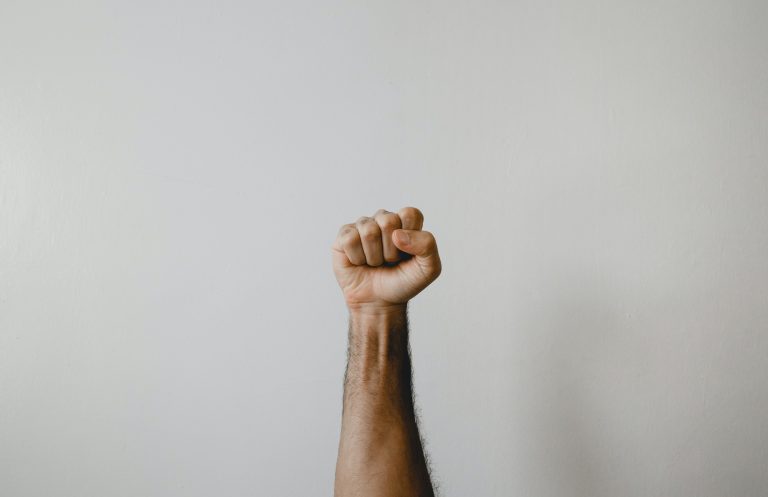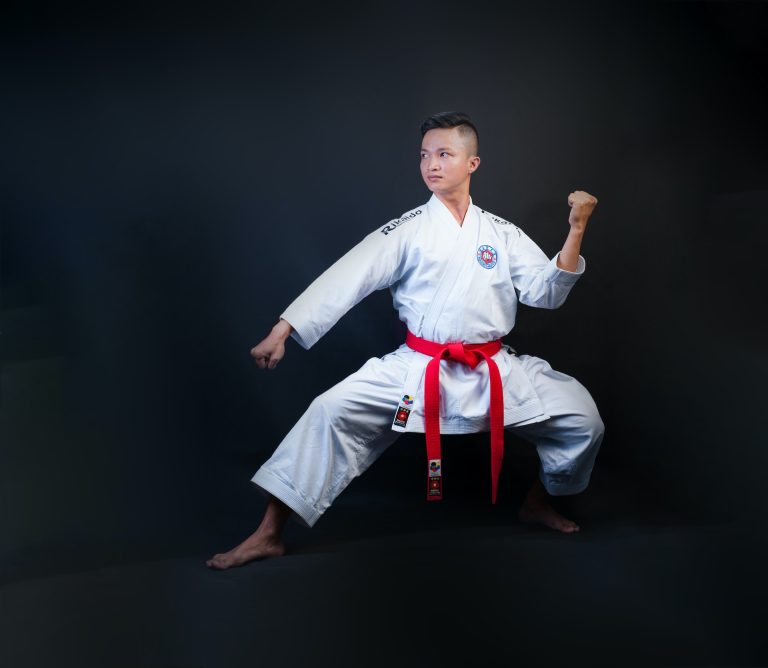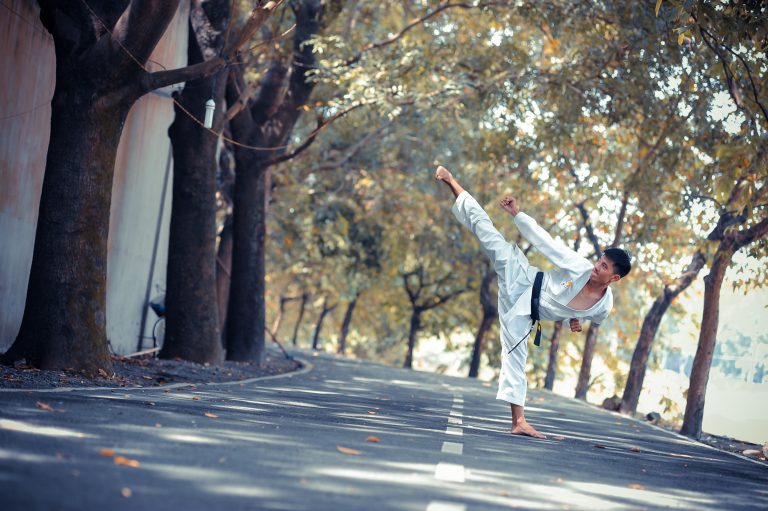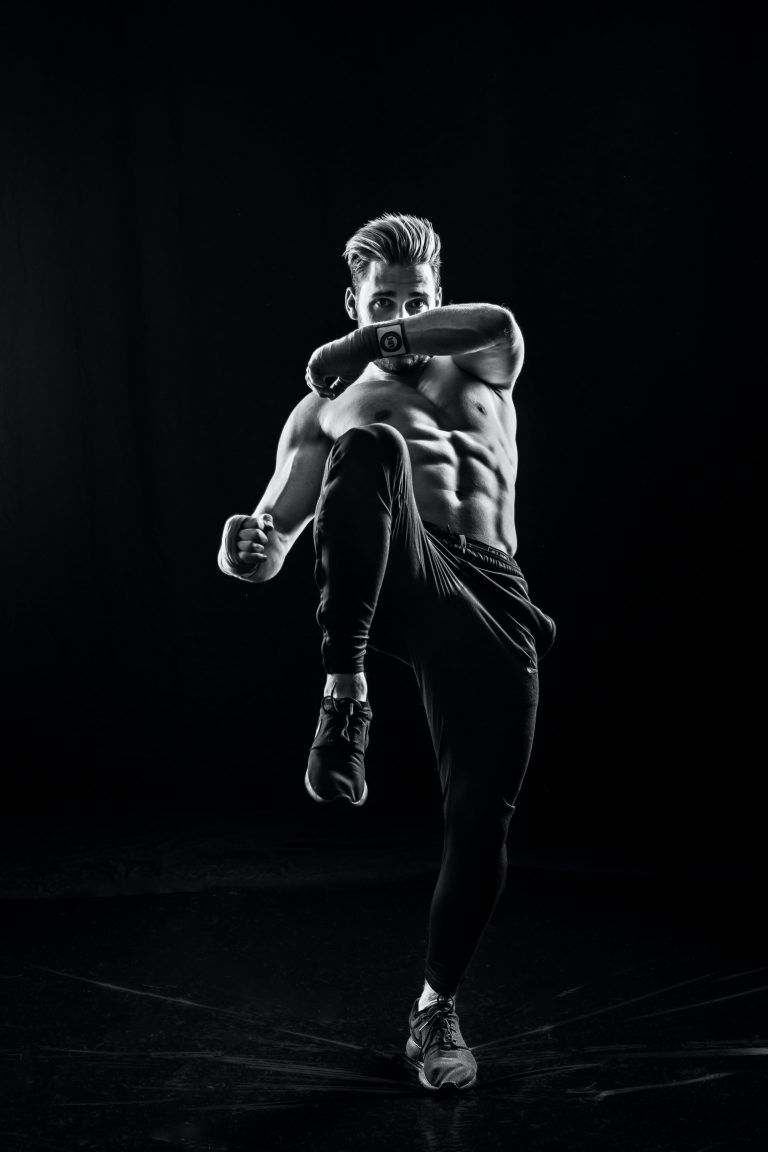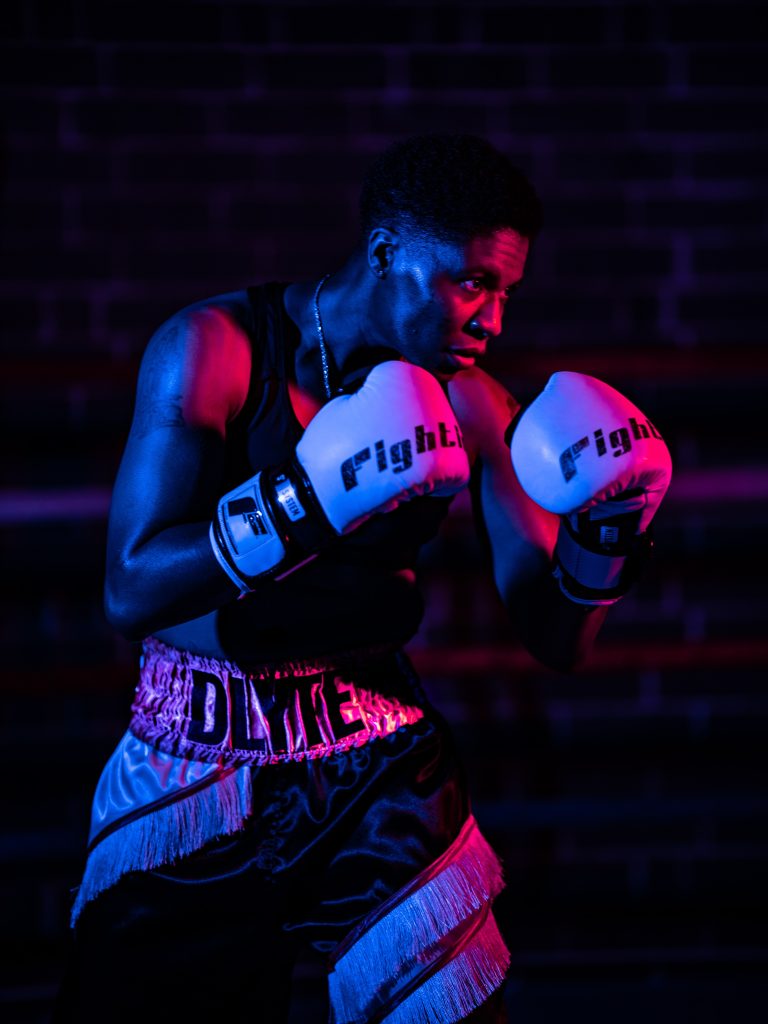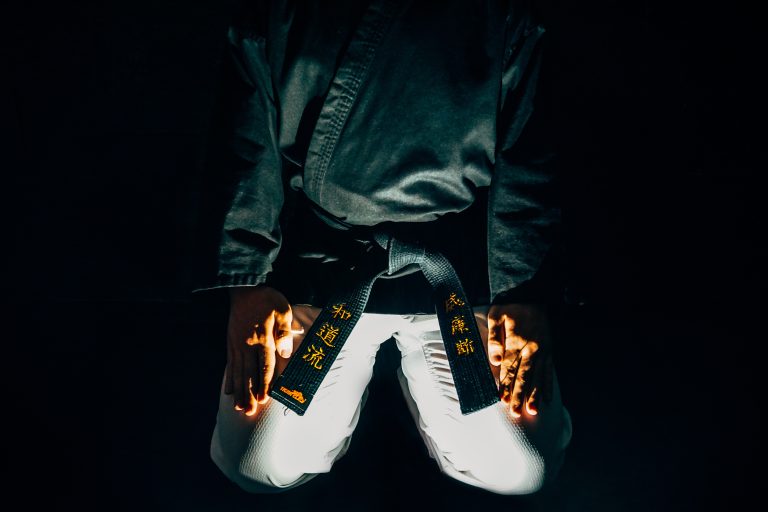What The Word Karate Means: A Comprehensive Explanation
Karate is a popular martial art form that originated in Japan, and it has become an important part of Japanese culture. The word „karate“ is a combination of two different Japanese words, and it has several meanings, each of which sheds some light on what this combat sport truly represents.
In this blog post, we will explore the meaning of the word karate and what it represents in the world of martial arts. Additionally, we will delve into the history of karate, its different styles, and how it has evolved over time.
Etymology of the Word Karate
The word „karate“ is a combination of two Japanese words: „kara“ and „te.“ „Kara“ means „empty,“ while „te“ means „hand.“ Therefore, together the word „karate“ means „empty hand.“ This is because in the practice of karate, no weapons are used, and the combatants fight with only their bare hands and feet.
But there is another interpretation to the word „kara.“ In the Okinawan dialect, the word „kara“ means „China.“ This gives another layer of meaning to the word karate, as it implies that the empty-hand fighting style originated in China before it was adopted and modified by the Okinawans.
History of Karate
The history of karate can be traced back to the Ryukyu Islands, which are now part of modern-day Okinawa in Japan. The Ryukyu Kingdom existed from the 15th century until the late 19th century, and during this time, the empty-hand fighting style was developed and refined by the local inhabitants.
The Okinawans called their fighting style „Ti,“ which meant „hand.“ This was modified to „te“ in the early 20th century, and then combined with the „kara“ to form „karate.“
In the early 20th century, karate was introduced to mainland Japan by Gichin Funakoshi, who is now known as the „father of modern karate.“ Funakoshi developed his own style of karate called Shotokan, which is still widely practiced today.
Styles of Karate
Today, there are several different styles of karate, each with its own unique characteristics and techniques. Here are some of the most popular styles:
– Shotokan: as mentioned earlier, this is the style developed by Gichin Funakoshi. It is known for its deep stances and long, linear movements.
– Goju-Ryu: developed by Chojun Miyagi, this style focuses on close-range combat and circular movements.
– Shito-Ryu: developed by Kenwa Mabuni, this style is a blend of Okinawan karate and Chinese martial arts.
– Wado-Ryu: developed by Hironori Ohtsuka, this style emphasizes the importance of body shifting and evasion.
There are many other styles of karate as well, but these are some of the most recognizable and widely practiced.
The Evolution of Karate
Karate has come a long way since its early days in the Ryukyu Islands. Today, it is a popular competitive sport around the world. In fact, karate was recognized as an Olympic sport for the first time during the 2020 Summer Olympics in Tokyo.
Despite its evolution and globalization, karate still retains its original philosophy, focusing on self-defense, discipline, and personal growth. Karateka (practitioners of karate) learn not just how to fight, but also how to live their lives with honor, respect, and humility.
What does the word karate mean?
Karate, pronounced as „ka-ra-te,“ is a martial art that originated from the Ryukyu Kingdom, which is now known as Okinawa, Japan. The word „karate“ is derived from two Japanese characters – ‚Kara‘ meaning „empty“ and ‚Te‘ meaning „hand.“ Thus, karate translates to „empty hand“ in English.
The term „empty hand“ does not refer to the absence of weapons during combat. Instead, it represents the belief that a skilled karate practitioner can defend themselves against any opponent, even if they are unarmed. The goal of karate is to develop physical fitness, discipline, and self-defense skills through rigorous training and practice.
As karate has become a popular martial art worldwide, many questions arise about the history, practice, and purpose of karate. Here are some of the most frequent questions people ask about what the word karate means:
1. What is the history of karate?
The history of karate can be traced back to the Ryukyu Kingdom (modern-day Okinawa) in the 14th century. It was influenced by Chinese martial arts, which were introduced to Okinawa by Chinese traders and merchants. The locals combined Chinese martial arts with their own fighting techniques to create a unique fighting style, which they called „Te“ or „Tode“ (meaning „hand“ in the Okinawan language).
In the early 20th century, karate was introduced to Japan, where it was developed and standardized into different styles. Gichin Funakoshi, a prominent karate master, founded Shotokan Karate, one of the most widely recognized styles of karate. Since then, karate has gained global popularity and is now practiced by millions of people around the world.
2. What are the benefits of practicing karate?
Karate offers numerous physical, mental, and emotional benefits. Some of the most prominent benefits of practicing karate include:
- Improved physical fitness: Karate involves physical exercise that can improve your cardiovascular health, increase your strength and flexibility, and help you maintain a healthy weight.
- Enhanced self-defense skills: Karate teaches various self-defense techniques that can help you protect yourself against attackers.
- Increased discipline and focus: Karate requires discipline, focus, and concentration, which can improve your mental clarity and ability to focus on tasks.
- Boosted confidence and self-esteem: Practicing karate can improve your self-confidence and self-esteem, as you learn new skills and grow stronger physically and mentally.
3. What are the different styles of karate?
There are numerous styles of karate, each with its own techniques, training methods, and philosophy. Some of the most popular styles of karate include:
- Shotokan Karate: This style of karate emphasizes strong, linear movements and focuses on developing a strong foundation of basic techniques.
- Goju-Ryu Karate: Goju-Ryu karate emphasizes circular movements and incorporates breathing exercises and traditional Japanese practices such as meditation and chanting.
- Wado-Ryu Karate: This style of karate integrates elements of judo and aikido, and emphasizes coordination and fluidity of movement.
- Shito-Ryu Karate: Shito-Ryu karate incorporates techniques from other martial arts, including kung fu and jujitsu, and emphasizes a wide range of techniques and body movements.
4. What should I expect in my first karate class?
If you’re new to karate, you can expect your first class to focus on learning the basic techniques and movements of the martial art. You will be taught how to stand, how to punch and kick, and how to move your body in different ways. You will also learn basic self-defense techniques and how to apply them in different situations.
Your instructor will guide you through each movement and explain how to perform each technique correctly. Don’t worry if you feel unsure or awkward at first – it takes time and practice to master the techniques of karate. Focus on learning the basics and have fun while you’re doing it.
5. Do I need any special equipment to start practicing karate?
To start practicing karate, you will need some basic equipment, including:
- Karate uniform (gi): A karate uniform typically consists of a jacket, pants, and a belt. This uniform is designed to be lightweight and durable, allowing you to move freely during practice.
- Mouthguard: A mouthguard is essential to protect your teeth and jaw during sparring.
- Protective gear: Depending on your instructor and training style, you may need additional protective gear, such as gloves, shin guards, or headgear.
Introduction
Karate is a martial art that originated in Japan, and it has a long and fascinating history. The word karate itself has an interesting meaning, and it is important to understand its origins if you want to truly appreciate this martial art. In this blog post, we will explore the meaning of the word karate, its linguistic roots, and its cultural significance. We will also provide step-by-step instructions on how to pronounce the word karate correctly.
What Does the Word Karate Mean?
Karate is a Japanese word that is composed of two characters: “kara” and “te.” The character “kara” means “empty,” and the character “te” means “hand.” Therefore, the word karate means “empty hand” in English. This phrase refers to a style of martial arts that emphasizes open-handed techniques rather than the use of weapons.
The term karate can also be translated as “China hand” because it originated in the Ryukyu Islands, which were once part of the Chinese Empire. These islands, which are now part of Japan, were located between China and Japan and had a rich cultural heritage. The Chinese influence on the martial arts of the Ryukyu Islands is evident in the use of Chinese characters to describe the various styles of karate.
Linguistic Roots of Karate
The word karate has its linguistic roots in both the Chinese and Japanese languages. The character “kara” comes from the Chinese word “kong,” which means “empty” or “void.” The character “te,” on the other hand, is a native Japanese word that means “hand.”
The Chinese influence on the Ryukyu Islands dates back to the 14th century, when the islands were part of the Chinese Empire. During this time, Chinese martial arts were introduced to the islands, and the locals began to develop their own styles of martial arts that incorporated Chinese techniques and concepts.
Over time, the martial arts of the Ryukyu Islands evolved into what is now known as karate. Today, karate is recognized as a Japanese martial art, but its roots in Chinese culture are still evident in its techniques and terminology.
How to Pronounce Karate Correctly
Pronouncing the word karate correctly is important if you want to be taken seriously by other practitioners of the martial art. Here are the steps to pronouncing karate correctly:
Step 1: Start by saying “kah” as in the word “car.”
Step 2: Next, say “rah” as in the word “car,” but roll your “r” slightly.
Step 3: Finally, say “tay” as in the word “day.”
Put the three sounds together, and you have the correct pronunciation of the word karate: ka – rah – te.
Cultural Significance
Karate is more than just a martial art; it is also an important part of Japanese culture. The discipline, focus, and respect that are emphasized in karate are highly valued in Japanese society, and many people practice karate as a way to improve themselves both physically and mentally.
In addition to its cultural significance in Japan, karate has also become a popular sport around the world. Today, there are millions of people practicing karate in over 190 countries, and it is one of the most widely practiced martial arts in the world.
Conclusion
In conclusion, the word karate means “empty hand” in Japanese, and it has its linguistic roots in both Chinese and Japanese culture. The pronunciation of the word is important for those who practice the martial art, and it is a popular sport around the world. Understanding the meaning and cultural significance of the word karate is an important part of appreciating this fascinating martial art.
Inhaltsverzeichnis

